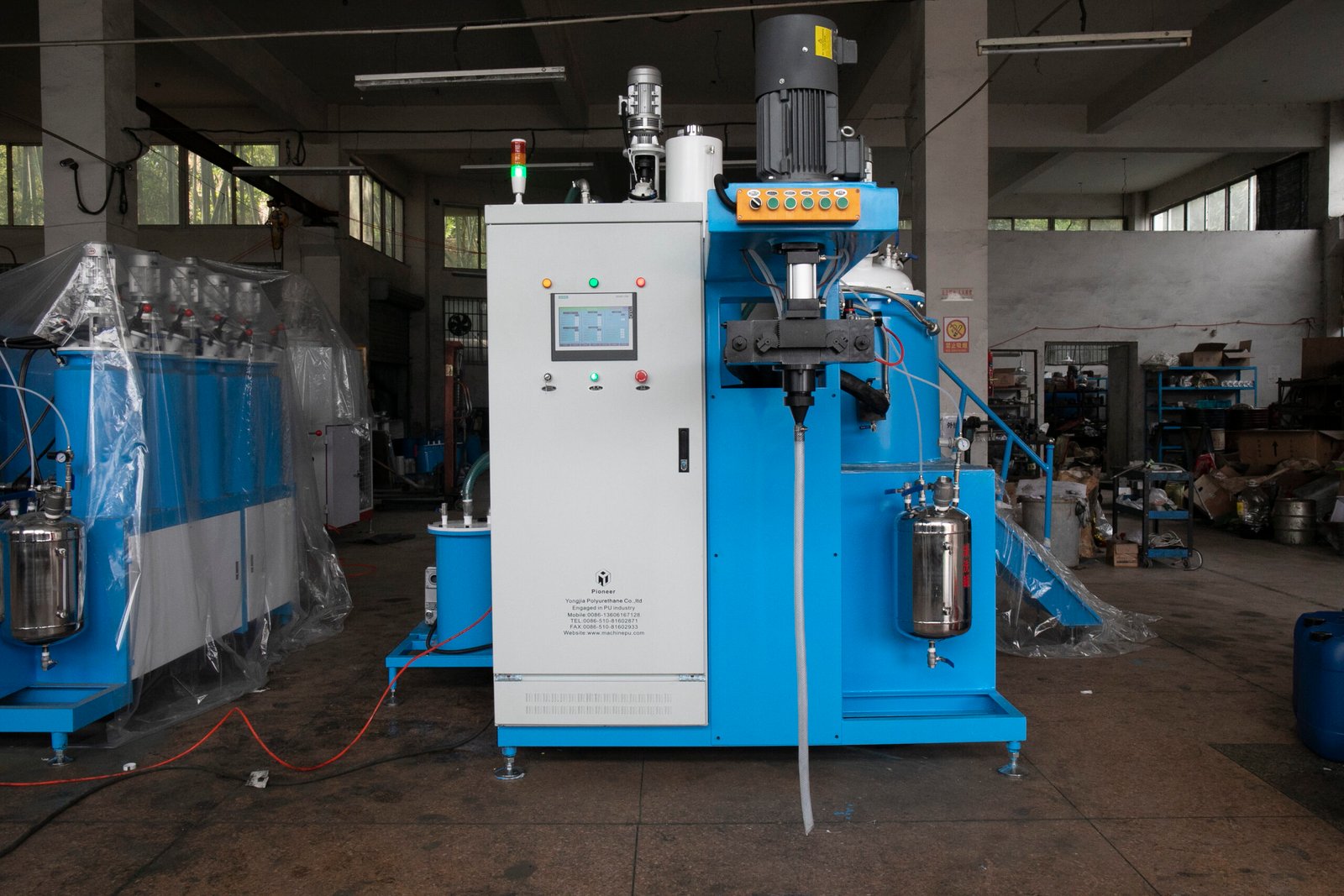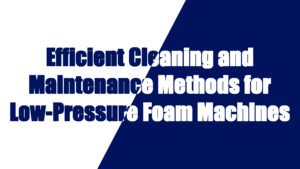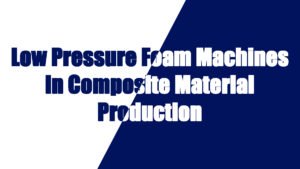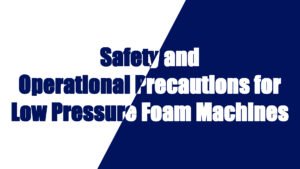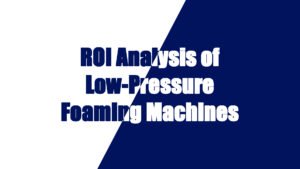Elastomer casting machines are the cornerstone of elastomer production, directly influencing product quality and production efficiency. Elastomers are widely used in industries such as automotive, industrial seals, footwear, and medical devices, making efficient and precise machinery essential to meet the demands of modern manufacturing. This article provides a detailed explanation of the basic working principles of elastomer machines, focusing on the key components and how they work together to produce high-quality elastomer products.
I. Basic Working Principles of Elastomer Machines
The operation of آلات صب البولي يوريثين can be summarized in the following stages: raw material preparation, precise metering, dynamic mixing, injection molding, cooling and demolding, and post-processing. Below is a detailed breakdown of each stage:
1. Raw Material Preparation and Conveyance
Elastomer machines start by preparing and conveying materials through storage and transfer systems. Common raw materials include isocyanates, polyether polyols, and various additives.
- Storage Tanks: Equipped with heating and stirring functions to maintain consistent material viscosity.
- Conveyance Systems: High-pressure pumps or low-pressure transfer systems transport the liquid materials to the metering system.
Key Data:
The temperature is typically controlled between 30°C and 80°C, and transfer pressure ranges from 2 to 15 MPa, depending on the material type and viscosity.
2. Metering and Proportioning
The machine employs high-precision metering pumps and flow monitoring devices to ensure materials are precisely measured and delivered according to the required formulation.
- Metering Mechanisms:
- Gear Pumps: Suitable for high-viscosity materials with a metering error of less than 0.5%.
- Piston Pumps: Better suited for medium to low-viscosity liquids with higher accuracy.
- Proportioning Control: Real-time adjustment of material ratios ensures uniform chemical reactions.
Case Example: A footwear manufacturer implemented a high-precision metering system, reducing raw material waste by 12% and improving product consistency by 25%.
3. Dynamic Mixing
Mixing is the core process of elastomer machines, combining multiple components into a homogeneous mixture for consistent chemical reactions.
- Dynamic Mixers: Use rotating blades to achieve high-speed mixing, ideal for fast-reacting materials.
- Static Mixers: Rely on spiral channels to guide material flow, suitable for slower-reacting formulations.
- High-Pressure Mixing: Enhances material uniformity through high-pressure impact.
Technical Data: Mixer speeds range from 2,000 to 6,000 RPM, with mixing times generally between 0.2 and 0.8 seconds.
4. Injection and Molding
After mixing, the material is injected into molds using high-pressure injection systems.
- High-Pressure Injection: Typically operates at 15-20 MPa, improving material flow and reducing air bubbles.
- Mold Temperature Control: Maintains consistent temperatures using water or oil cooling systems to ensure smooth product surfaces.
Efficiency Improvement: Upgraded injection systems in an automotive parts factory reduced molding cycles from 18 minutes to 12 minutes, increasing production efficiency by 33%.
5. Cooling and Demolding
The molded product undergoes cooling and curing in the mold to stabilize its structure and ensure dimensional accuracy.
- Cooling Time: Typically ranges from 30 seconds to 2 minutes, depending on the material.
- Automatic Demolding Systems: Use hydraulic or pneumatic assistance to streamline demolding and reduce manual operations.
Efficiency Data: Traditional manual demolding takes 30 seconds, while automated systems complete the task in just 10 seconds, improving efficiency by approximately 70%.
6. Post-Processing
Products may require trimming, grinding, coating, or other post-processing steps to meet final application requirements.
II. Key Components of Elastomer casting machines
Elastomer machines consist of several critical components, each playing a vital role in the production process. Here’s an in-depth look at these components:
1. Heating and Temperature Control System
- Function: Maintains raw materials within a specific temperature range to prevent solidification or reaction anomalies.
- Temperature Control: Utilizes PID control algorithms to achieve a temperature accuracy of ±2°C.
- Importance: Temperature fluctuations can negatively impact product properties such as hardness and tensile strength.
Example: Improved temperature control increased product pass rates by 10%-15%.
2. Pump System
- Function: Transports raw materials from storage tanks to the mixing unit.
- Pump Types:
- Gear Pumps: Ideal for high-viscosity materials with strong wear resistance.
- Screw Pumps: High precision, suitable for low-to-medium viscosity materials.
Troubleshooting Tip: Pressure fluctuations in pumps can often be resolved by inspecting seal wear and adjusting pressure valves.
3. High-Precision Metering System
- Features: Enables simultaneous metering of multiple liquid components with exact proportions.
- Real-Time Monitoring: Embedded flow sensors provide immediate feedback to correct proportioning errors.
Case Study: A medical device manufacturer reduced monthly material loss by 20% with a high-precision metering system.
4. Dynamic or Static Mixing System
- Dynamic Mixer Benefits: Best for high-viscosity and high-speed production environments.
- Static Mixer Benefits: Low maintenance costs, suitable for long-term use.
Data Insight: Dynamic mixers improve material uniformity by 15%-20% compared to static mixers.
5. Intelligent Control System
- Function: Monitors and adjusts operational parameters, including temperature, pressure, and flow rates.
- Technological Advancements:
- Remote Diagnostics: IoT-enabled devices allow real-time monitoring of machine performance.
- Predictive Maintenance: AI algorithms analyze machine trends to predict and prevent potential failures.
Market Insight: Smart control systems are expected to become standard in next-generation Elastomer casting machines.
The efficient operation of PU casting machines relies on the seamless integration of components, from raw material preparation to post-processing. As market demands for elastomer products continue to rise, the industry will see further advancements in automation, precision, and energy efficiency. By understanding the working principles and components of elastomer machines, manufacturers can optimize their processes, improve product quality, and remain competitive in the evolving market.


















